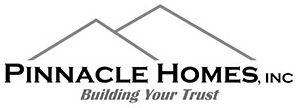It’s that time of year again; time to start thinking about the colder months ahead, and how to prepare your home for winter. It will be here before we know it! But don’t worry, we’ve come up with a few tips to help keep the heat in, the cold out, and everyone happy all season long.
Windows & Door Frames
One of the best places to start preparing the home for winter is the windows and door frames. A little weather stripping and caulking can make a world of difference in terms of preventing heat loss, lowering the energy bill, and improving year-round comfort inside the house.
Be sure to check each and every window and door. Remember that caulking may be necessary both inside and outside the home. Also, inspect for signs of more significant damage such as decay, rot, and cracking in these areas to see if anything requires further repairs.
Chimney, Fireplace, & Furnace
Another important aspect of annual, winter home improvement is chimney and fireplace inspection. Make sure there’s no debris stuck in the chimney, and that the damper works properly to ensure proper air flow. A professional chimney cleaning or inspection may be wise to consider as well.
You should also have your furnace serviced by a professional. Most manufacturers recommend a professional inspection once a year. Annual inspections help maintain your furnace’s health and keep it running properly when you need it the most. The majority of no-heat calls in the winter are related to a lack of proper maintenance.
Outdoor Considerations
Don’t forget to turn off all of the home’s exterior faucets. Be sure to drain them thoroughly to prevent leftover water from freezing and potentially bursting pipes. Also, remove attached hoses from those exterior faucets, and keep them stored away. If you have an irrigation or sprinkler system, be sure to shut down the controller or timer if one is in place. Then drain any hoses or water lines attached to them.
Bring any tools or power equipment inside as well, and be sure that gutters and downspouts are clear and properly in place.
Secure outdoor furniture with heavy pipes or other objects, or consider bringing certain items inside to the basement for storage. Small planters and pots should also be brought inside. Cut down any branches or tree overgrowth, which could potentially fall on the home or power lines during a storm.
Larger Home Improvement Projects
Of course, larger home remodeling or improvement projects may be recommended or necessary as well. These could range from roof replacements due to leaks or damage, installing new insulation in the attic or basement, and one of the most common of all home improvement chores, replacing the windows to improve energy efficiency.
Planning and preparation are key to your home surviving the winter and it’s not too early to start now.
Editor’s Note: This article was originally published November, 2015 and was updated August, 2022 for accuracy.

